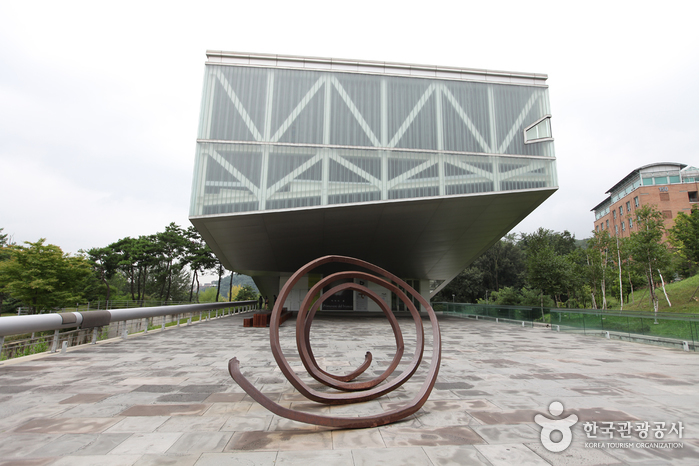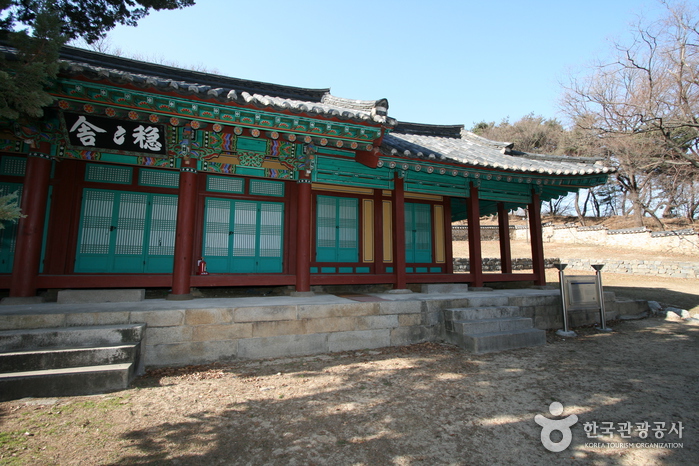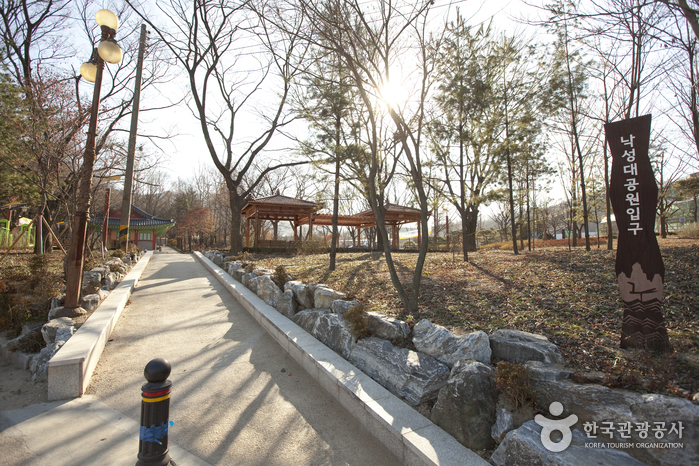Museum of Art, Seoul National University (서울대학교미술관)
3.3Km 2021-03-03
1, Gwanak-ro, Gwanak-gu, Seoul
+82-2-880-9504
Museum of Art, Seoul National University was established as an independent institution in 1995 after several years of development under the Department of Modern Art at Seoul National University Museum. It is the first university art museum in Korea dedicated exclusively to modern and contemporary art. Designed by the world-renowned architect Rem Koolhaas, the museum was constructed and donated by the Samsung Group. It has evolved into a cultural complex equipped with exhibition halls, auditorium, classrooms, and other educational facilities. The museum places special emphasis on educational programs that are open not just to the university's students and faculty, but also to the local community. In addition to modern and contemporary artworks, the museum brings together and exhibits diverse forms of art and culture such as architecture, music, literature, film, and theater.
Seoul National University (서울대학교)
3.3Km 2023-07-07
1, Gwanak-ro, Gwanak-gu, Seoul
+82-2-880-5114
Founded in 1946, Seoul National University is the most reputable university in Korea based on its long academic history and tradition. It was the first national university in Korea established by merging several institutions of higher education around the Seoul area, including Kyongsong University
Himart - Bisan Branch [Tax Refund Shop] (하이마트 비산점)
3.5Km 2024-04-22
275, Gwanak-daero, Dongan-gu, Anyang-si, Gyeonggi-do
-
Olive Young - Anyang Dongpyeon Branch [Tax Refund Shop] (올리브영 안양동편점)
3.7Km 2024-06-27
#108, and #109, 6, Dongpyeon-ro, Dongan-gu, Anyang-si, Gyeonggi-do
-
Ononsa Guesthouse (온온사)
3.8Km 2023-07-17
58 Gwanaksan-gil, Gwacheon-si, Gyeonggi-do
Though Ononsa, which was a guesthouse in Gwacheon, was constructed in the 27th year of King Injo's reign in the Joseon dynasty (1649), the name, "Ononsa," was given to this area during the reign of King Jeongjo. On February 11, 1790 during his royal procession to the tomb of his father, Crown Prince Sado, stayed at an inn in Gwacheon and, as he felt that it "has nice views and provides a comfortable stay," he bestowed upon the place plaques that he wrote himself - "Ononsa" to Seoheon and "Burimheon," which was the old nickname of Gwacheon, to Dongheon. This is how this place began to be called Ononsa.
It was designated as a Tangible Cultural Heritage of Gyeonggi-do on June 2, 1980, and it was restored on December 2, 1986 after being torn down.
E-Mart - Gwacheon Branch [Tax Refund Shop] (이마트 과천)
3.9Km 2024-04-22
11, Byeoryangsangga 3-ro, Gwacheon-si, Gyeonggi-do
-
Olive Young - Gwacheon Branch [Tax Refund Shop] (올리브영 과천점)
3.9Km 2024-06-26
25, Byeoryangsangga 1-ro, Gwacheon-si, Gyeonggi-do
-
Olive Young - Anyang Bisan Branch [Tax Refund Shop] (올리브영 안양비산점)
4.1Km 2024-06-26
1F, 103, Gwanak-daero, Dongan-gu, Anyang-si, Gyeonggi-do
-
Olive Young - Eunhaengnamu Sageori Branch [Tax Refund Shop] (올리브영 은행나무사거리)
4.1Km 2024-04-18
705, Geumha-ro, Geumcheon-gu, Seoul
-
Gwanaksan Mountain Nakseongdae Park (관악산 낙성대공원)
4.2Km 2021-07-16
77, Nakseongdae-ro, Gwanak-gu, Seoul
+82-2-879-6525
Nakseongdae Park was built as a tribute to General Kang Gam-chan (948-1031) of the Goryeo dynasty. In 1973, the city of Seoul reorganized the birthplace of General Kang, resulting in changes to the park. Located inside the park are Anguksa Shrine, the general’s birthplace, and a three-story stone pagoda, which was made during the Goryeo dynasty. The 4.48-meter-high pagoda is made of granite, and is called “Kang Gam-chan Tap (pagoda)” or “Kang Gam-chan Nakseongdae Tap”.
*Anguksa Shrine
Anguksa is a shrine built in 1974 emulating the wooden architecture style of the Goryeo era. The shrine has high ceilings and houses the portrait of General Kang Gam-chan. The shrine is located on the road leading to the back gate of Seoul National University and has become a popular place in the area.
*Nakseongdae Yuji
Nakseongdae Yuji is the birthplace of General Kang Gam-chan and the original location of the three-story pagoda. During the maintenance of Nakseongdae area in 1973, the pagoda was moved into the vicinity of Anguksa Shrine, and a two-meter tall monument was erected in its original location to mark the historical significance of the site.


![Himart - Bisan Branch [Tax Refund Shop] (하이마트 비산점)](http://tong.visitkorea.or.kr/cms/resource/89/2889989_image2_1.jpg)

![E-Mart - Gwacheon Branch [Tax Refund Shop] (이마트 과천)](http://tong.visitkorea.or.kr/cms/resource/88/2881788_image2_1.jpg)
![Olive Young - Eunhaengnamu Sageori Branch [Tax Refund Shop] (올리브영 은행나무사거리)](http://tong.visitkorea.or.kr/cms/resource/86/2888486_image2_1.jpg)

 English
English
 한국어
한국어 日本語
日本語 中文(简体)
中文(简体) Deutsch
Deutsch Français
Français Español
Español Русский
Русский